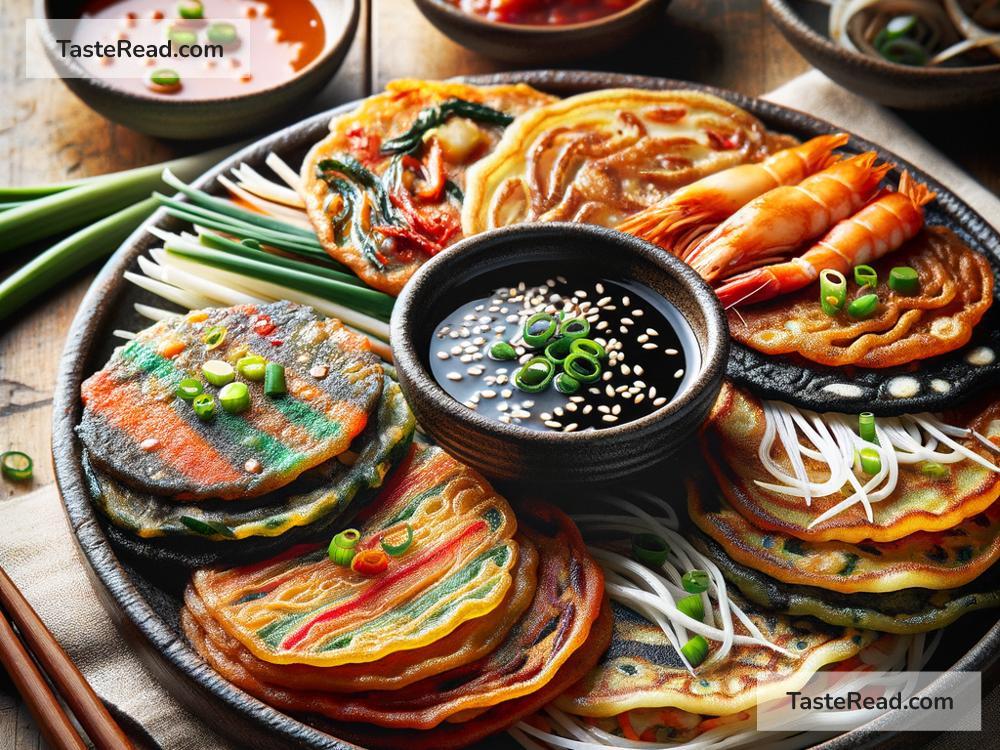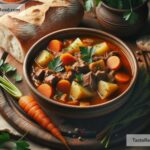Discovering the Rich History of Traditional Korean Jeon Pancakes
Traditional Korean cuisine is full of delicious dishes that reflect the country’s history, culture, and love for sharing food with family and friends. Among the many tasty treats, one dish stands out for its simplicity, versatility, and incredible flavor: jeon, the Korean pancake. Jeon is more than just food—it is a link to Korea’s past, a symbol of togetherness, and a feast for the senses. Let’s take a closer look at the fascinating history and cultural importance of traditional Korean jeon pancakes.
What Is Jeon?
Jeon is a type of pancake made by coating ingredients in a thin batter and frying them until golden and crispy. While the word “pancake” might remind you of sweet breakfast dishes, jeon is different. It can be sweet or savory, depending on the ingredients used. Jeon is usually made with vegetables, meat, seafood, or even tofu. Each ingredient is dipped in flour and egg batter, then pan-fried in oil for a wonderful crunch. The result is a small dish that’s both delicious and satisfying.
Jeon is versatile, and Korea offers many different varieties of this pancake, including pa-jeon (green onion pancake), kimchi jeon (kimchi pancake), haemul jeon (seafood pancake), and hobak jeon (zucchini pancake). There’s even a special sweet version called bindaetteok, made with mung bean batter and often stuffed with extra goodies like meat or vegetables.
The Origins of Jeon
Jeon has a long history in Korea, dating back hundreds of years. The dish first appeared during the Joseon Dynasty (1392–1897), a time of rapid cultural and culinary growth. During this era, Korean royalty and the noble class were introduced to a wide variety of exquisite foods, thanks to the influence of neighboring countries like China. Jeon was one of the elegant dishes served at royal feasts and ceremonies.
In hwapyeonggap, a traditional banquet for royal families, colorful jeon was served as part of a larger spread. These pancakes were prepared with finely chopped ingredients to show off skilled cooking techniques and artistic presentation. This attention to detail made jeon more than just food—it was a sign of craftsmanship and respect for the guests.
Eventually, jeon spread beyond the royal court and became part of everyday Korean life. Farmers and humble families adapted the dish to fit their needs, using whatever fresh ingredients were available. Surprisingly, this humble version of jeon became just as cherished as the royal pancakes.
Jeon’s Role in Korean Culture
Jeon holds a special place in Korean tradition, especially when it comes to celebrations and holidays. One of the most important holidays in Korea is Chuseok, a harvest festival celebrated in autumn. The holiday is a time for families to reunite, pay respects to ancestors, and share an enormous feast. During Chuseok, jeon often takes center stage at the dining table. Families spend hours in the kitchen preparing jeon, with grandparents and children working side by side to fry the pancakes.
Similarly, jeon is an essential part of jesa, a memorial ritual to honor ancestors. Koreans believe that food offerings hold spiritual significance during jesa ceremonies. Different types of jeon are prepared and carefully arranged on ritual tables as a way to share blessings and show gratitude to ancestors.
Outside of holidays, jeon is enjoyed anytime as a snack, appetizer, or main dish. It pairs perfectly with Korean rice wine, makgeolli, which has a slightly sweet and tangy flavor. On rainy days, Koreans often crave pa-jeon and makgeolli—a comforting combination that warms hearts and lifts spirits.
Jeon in Modern Times
In today’s world, jeon is still a beloved food in Korea and has also gained fans around the globe. Korean restaurants in many countries now serve jeon as part of their menus, so people everywhere can experience its unique charm. Social media has played a big role in popularizing jeon recipes, with videos showing how easy it is to make these pancakes at home.
What’s especially wonderful about jeon is its adaptability. Modern chefs and home cooks continue to experiment with different flavors, combining traditional recipes with new ingredients to suit contemporary tastes. Whether you prefer classic flavors like green onion and seafood or want to try a fusion-style jeon topped with cheese, this pancake will always bring joy to the table.
Experience the Joy of Making Jeon
Making jeon is a fun and rewarding cooking experience that anyone can try. The ingredients are simple, and the process doesn’t take long. Start by choosing your favorite vegetables, seafood, or meat. Dip each ingredient into flour, then coat it with beaten eggs. Heat some oil in a frying pan, place the ingredients evenly, and fry them on both sides until crisp. Serve your jeon hot, and dip it into soy sauce mixed with vinegar for an extra burst of flavor.
Whether you’re cooking for yourself, your family, or friends, making jeon can be an enjoyable experience that brings everyone closer together. The pancake may seem small, but its history, culture, and taste are massive.
Final Thoughts
Traditional Korean jeon pancakes are more than just a dish—they’re a piece of history that has been passed down through generations. From royal feasts to family gatherings, jeon has touched many lives and continues to be loved by people all over the world. Its rich cultural significance combined with its delightful taste makes it a truly special food.
Next time you crave something crispy, flavorful, and meaningful, try making jeon at home. You’ll discover how food can bring people together, just as it has done in Korea for centuries. So why wait? Grab a frying pan, choose your ingredients, and enjoy this piece of Korean history on your plate!


